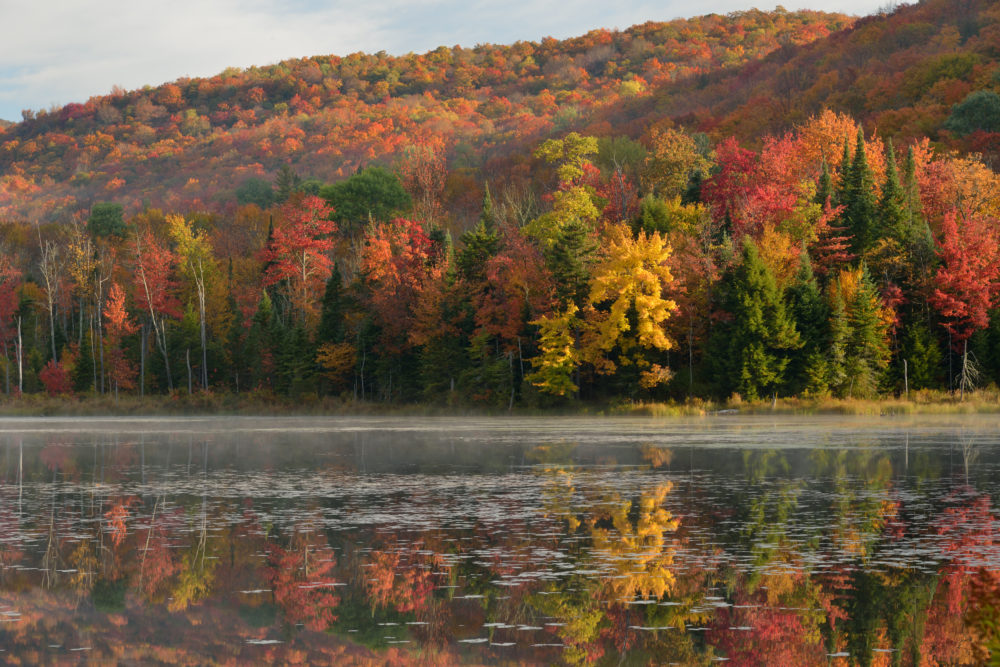
Ever wonder why the leaves change colors? Green Mountain Club’s Executive Director and forester, Mike DeBonis, explains the phenomenon of fall foliage. If you’re looking for somewhere to hike, you can look at our suggested day hikes for some ideas.
Hiking in Vermont is one of the best ways to watch the beautiful ritual of death and renewal as trees prepare for winter and the next growing season. The kaleidoscope of color we enjoy so much is the result of chemical changes to leaves of deciduous trees, which shed their leaves or needles annually.
While multiple factors both inside the plant (for instance, nutrients and acidity) and in the environment (such as temperature, moisture and sunlight) contribute to the duration and color of foliage, day length is the primary signal that summer is over. When days shorten you and I buy firewood and get out our winter clothes. Deciduous trees start a process called senescence—the dying phase of leaves.
Cells between the leaf and stem begin to expand rapidly, forming a corky abscission layer that serves two purposes: 1) it blocks the two-way flow of water, minerals, and nutrients between tree and leaf; and 2) creates a clean breaking point that enables the leaf to safely fall from the tree once its work is done.
To understand where fall colors come from, we need to know why leaves are green to begin with. The green color comes from chlorophyll—a light absorbing pigment in plants that is used in the process of converting sunlight to food. Chlorophyll absorbs certain wavelengths of visible light—reds and yellows—and reflects others. The green we see is the wavelength reflected from the leaves.
In fall, as the abscission layer forms, the production of chlorophyll slows, then stops. Without the production of chlorophyll, the green fades rapidly (imagine a piece of colored paper left out in the sun) and the yellow, orange, and blue pigments become visible.
We get red and purple pigments from sugars trapped in the dying leaves. Brown pigments come from tannins. They’re what remain after all of the other pigments break down (picture brown oak or beech leaves rustling in cold winter winds).
Each year the process begins anew. We are fortunate in Vermont to witness this amazing blast of foliage color that is part of the necessary and natural cycle of renewal in our forests.



















When is peak foliage on the long trail?
It depends on what part of the Long Trail you are on (the farther north you are, the earlier the leaves start to turn) but the first week or two of October are usually beautiful!
My family and I may come for a few days in late october (landing 10/22). Is there still a chance to see all these beautiful colors? Thank you and please forgive my English! (I’m French…)
The best time for foliage is usually in the first two weeks of October. You may still be able to find some color after that in lower elevations or the southern part of the state.